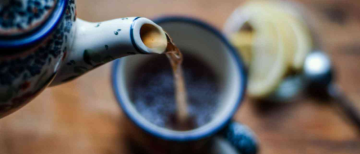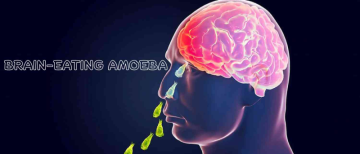What do Tiger Woods and Oprah Winfrey have in common? They both have expressed their admiration for the ancient mind-body practice of qigong. (pronounced “chee-gong”).
Qigong derives its name from the combination of two words: "qi," denoting "subtle breath" or "vital energy," and "gong," signifying "skill cultivated through steady practice." Together, these words encapsulate an ancient tradition that utilizes the harmonious interplay of breath, movement, and intention to foster well-being and equilibrium within the body. Delve into the following sections to explore the essence of qigong, uncover its historical origins, delve into the potential advantages it offers for health and wellness, and gain insights into initiating your own qigong practice.
_1685431788.png)
History of Qigong
Qigong has a deep historical background intertwined with traditional Chinese medicine (TCM) and martial arts. It emerged from Daoist practices focused on personal health and evolved over time. One early form of qigong is the "Five Animal Frolics," which involved gentle movements inspired by animals to relieve tension. Qigong operates based on TCM principles, aiming to promote the flow of qi (vital energy) through simple poses and breathwork.
It has profound effects on the body and mind, including improving circulation, mobilizing joints, and reducing stress. Qigong is embraced worldwide for its physical, spiritual, and wellness benefits. While qigong instruction is not federally regulated, it's important to research reputable organizations and practitioners and maintain an integrative approach by consulting with healthcare professionals.

Types of Qigong
Qigong encompasses a wide range of styles, but they all share the common elements of breath, movement, and intention. The Red Thread International Qigong Institute has categorized qigong into three basic types:
1. Health and Medical Qigong: It includes styles aimed at improving overall well-being. Health Qigong is widely available and taught in group classes or individual sessions. Medical qigong focuses on addressing specific medical conditions and should be practised under the guidance of a qualified practitioner. External qigong involves emitting qi to facilitate healing in others and is often combined with prescribed exercises for patients.
2. Martial Qigong: This category includes qigong practices that enhance strength, agility, and endurance to improve martial arts skills, both defensively and offensively. Tai chi is a well-known practice within this category, which combines martial elements with flowing movements and focused intention.
3. Spiritual Qigong: This category focuses on self-cultivation and heightened awareness through spiritual practices. Spiritual qigong often incorporates techniques such as mantras, mudras (hand positions), seated meditations, and prayers to foster spiritual growth and connection.
It is important to note that these categories provide a general framework, and many qigong styles may incorporate elements from multiple categories. Each style may have its unique techniques, forms, and purposes, allowing individuals to explore and choose the style that resonates with their specific goals and interests.
_1685431245.png)
Benefits of the Qigong technique
Qigong has the potential to offer various health benefits, including:
1. Lowering Blood Pressure: Qigong's deep breathing, meditation, and relaxation components may help reduce systolic and diastolic blood pressure in individuals with hypertension. It is believed that the repetitive movements in qigong improve blood flow and organ function, contributing to these blood pressure-lowering effects. However, more research is needed to fully understand the mechanisms behind this benefit.
2. Easing Pain from Knee Osteoarthritis: The gentle movements in qigong, particularly the tai chi style, have been recommended to improve quality of life, decrease pain, and enhance function in individuals with knee osteoarthritis. While some studies have shown positive effects on pain, stiffness, and physical function, more high-quality research is required to establish the efficacy of qigong for knee osteoarthritis.
3. Improving Well-Being in People With Cancer: Qigong is often used as a complementary therapy to help cancer patients manage the side effects and stress associated with cancer treatment. Studies have shown that qigong can significantly improve psychological and physical symptoms related to cancer and its treatment. Patients with breast cancer who participated in a medical qigong program reported greater improvements in quality of life, including reductions in tension, anxiety, depression, and fatigue.
It is important to note that while qigong shows promise in these areas, further research is necessary to validate these findings and better understand the underlying mechanisms. Additionally, qigong should be approached as a complementary practice and not a substitute for conventional medical treatments. It is advisable to consult with healthcare professionals to receive personalized guidance.
_1685431357.png)
Qigong Safety
Extensive research suggests that qigong is generally safe and does not typically result in negative effects for practitioners. However, the safety of qigong during pregnancy has not been extensively studied. Therefore, it is advisable for pregnant women to consult with their healthcare provider before initiating a qigong practice to ensure it is suitable for their specific circumstances.
© Copyright 2023. All Rights Reserved Powered by Vygr Media.






















